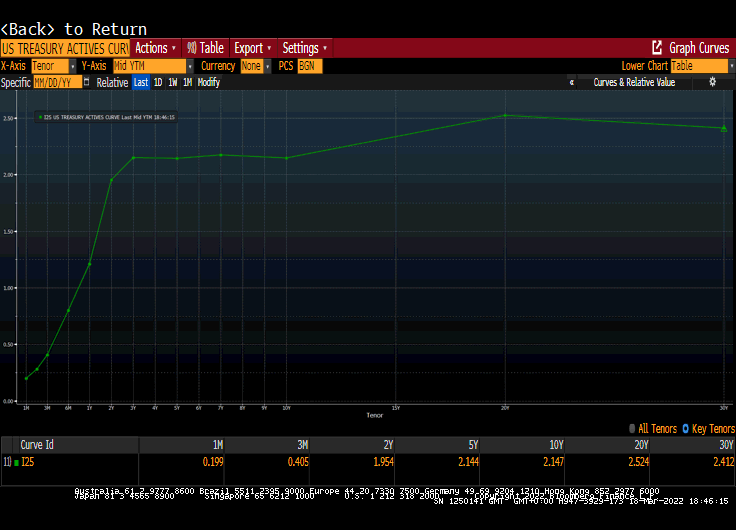Living With Yield Curve Inversion
Thanks to a subscriber for this report from Morgan Stanley which may be of interest. Here is a section:
US Rates | An inverted curve by design, not by conundrum We expect 2y,5y, and 10y yields to end 2022at 2.75%,2.50%, and 2.40%, respectively, and see inverted curves across the entire UST space. We think markets are learning to live with yield curve inversion, and not necessarily extrapolating it as a sign of recession, given (1) the market's willingness to price restrictive policy – a terminal rate above the neutral rate – consistent with an inverted curve, and (2) the significant distortions from pension demand, QE, and flight to quality, making the curve artificially flat. We think investors eventually will accept an inverted curve as a natural consequence of interest rate policy moving toward restrictive territory faster than balance sheet policy moves toward neutral territory. Discussions of an impending recession will continue, but we expect confidence in that view to wane over time.
Here is a link to the full report.

The US yield curve is exceptionally flat from 2-years out to 30-year. Earlier this week the 5-year traded above the 10-year. That was the first inversion of any part of the curve in this cycle. This is not the only measure that is beginning to signal signs of stress.
Rationalisations for why this time is different crop up whenever the yield curve approaches inversion. The low terminal level of rates was used to rationalize the inversion in 2019 but did not stop significant liquidity issues from manifesting. It is not unreasonable to argue that even without the pandemic there would still have been in recession in 2020.
Banks borrow short-term and lend long term. An inverted yield curve messes up that business model and inhibits lending activity. The sensitivity of highly leveraged sector to lower liquidity in turn reduces speculative fervour and prices eventually begin to roll over. Commodity traders blowing up is a symptom of illiquidity and an inability to tackle volatility.
In 2017, the Trump tax cuts boosted the outlook for corporate profits but the Fed spent the whole year raising rates. That began to bite in 2018 and the infusion of liquidity late in the year was required to reignite investor interest.
At present, the market is rebounding because China is expected to provide additional liquidity to support its domestic market and the US economy is still firm. The stock market generally rallies into the first inversion and does not turn meaningfully lower until the yield curve spread starts expanding again.
.png)
The S&P500 rallied today to break the short-term sequence of lower rally highs and closed back above the 200-day MA. This confirms a low of at least near-term significance.
Quantitative tightening is expected to begin next month. Its effects tend to be cumulative so the extent to which markets rally is going to be very dependent on how much liquidity is forthcoming from countries like China and Japan.
Back to top

